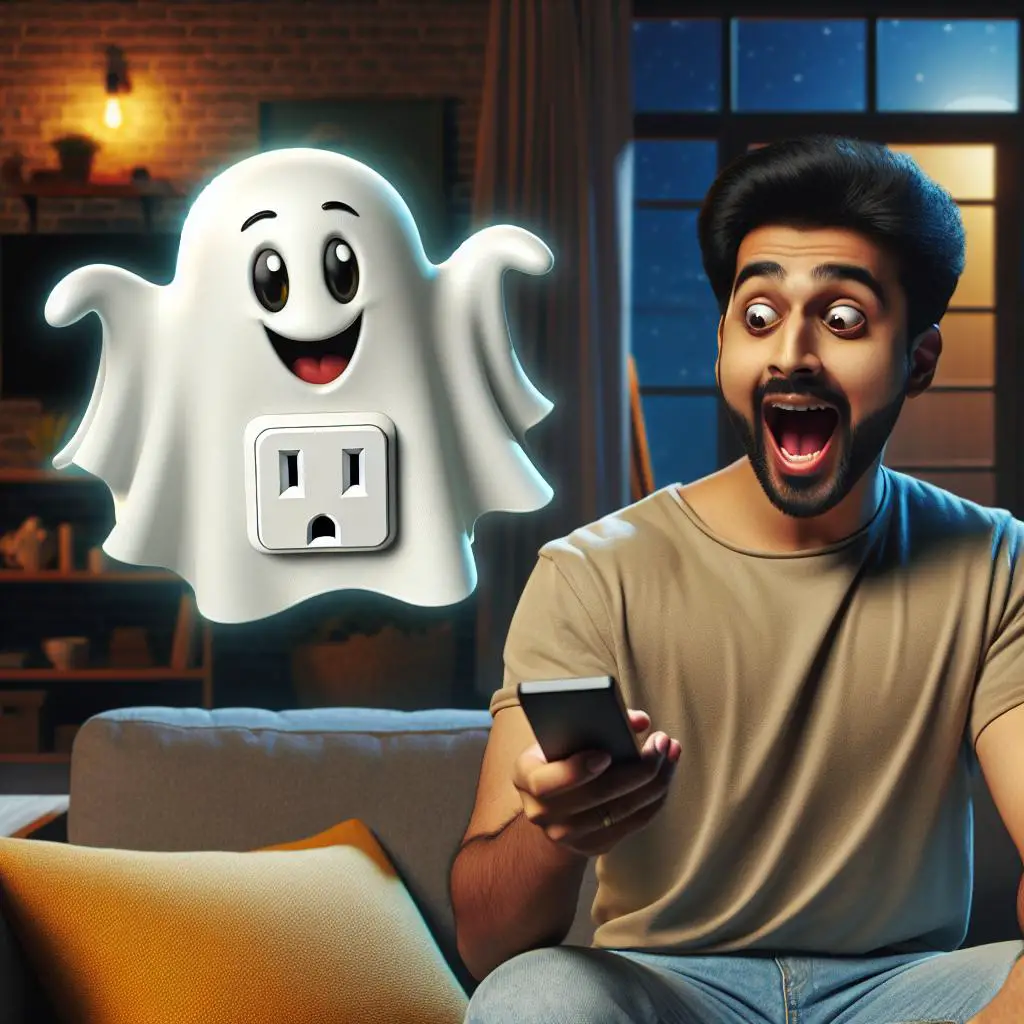Are you looking for a way to make your home smarter and more efficient? Look no further than the Kasa Smart Plug. This innovative device allows you to control your lights and appliances remotely, as well as set schedules for when they should turn on or off. But what happens if the plug turns on all by itself? In this blog post, we’ll be exploring why this might be happening and how to fix it.
1. What Causes Kasa Smart Plug to Turn On By Itself?
You might be wondering why your Kasa Smart Plug turns on by itself – it could be due to an unstable connection, faulty plug, or a low battery. In order to find out what’s causing the issue, it is important to inspect the power outlet or hardwired smart switch on the wall that your device is plugged into. Additionally, you may need to update your device and Kasa app, prioritize devices to automatically turn them off, and troubleshoot any low battery issues. Once you have ensured that your device is working properly, you can then turn it on and off remotely or set up schedules or scenes to automatically switch it on and off. Additionally, you can set peak energy demand goals and manage multiple smart plugs on the same network. To avoid having your Kasa Smart Plug turning on by itself in the future, make sure to follow these steps.
2. How to Update Your Device and Kasa App?
Updating your device and Kasa app is the first step to ensuring that your smart plug won’t randomly turn itself on and off. To do this, open the Kasa app, go to Me at the bottom right, then click on Firmware Update. If any firmware updates are available, make sure you install them as soon as possible. This will help you get the most out of your smart plug and keep it running smoothly.
3. Tips on How to Prioritize Devices and Automatically Turn Off?
If you’re having issues with your Kasa Smart Plug randomly turning on by itself, you can prioritize devices to automatically turn off if needed. You can also set up scheduled or random times for the plug to turn on or off, as well as remotely control connected devices. With a few simple steps, you can make sure that your Kasa Smart Plug is running smoothly and isn’t turning on by itself.
4. Troubleshooting Low Battery Issue?
If you’re experiencing a low battery issue with your Kasa Smart Plug, there are a few things you can do to troubleshoot. First, check if the plug is plugged in correctly and if the connection isn’t loose. Once you’ve confirmed that the plug is securely connected to the power point, you can try updating your device and the Kasa app. If this doesn’t work, try prioritizing devices so that your Smart Plug is given priority access to power. You can also set up automated tasks or a countdown timer to turn your Smart Plug on and off remotely. Lastly, setting peak energy demand goals will help manage multiple Smart Plugs on the same network and help prevent it from turning on by itself.
5. How to Turn Your Smart Plug On and Off Remotely?
Now that you know how to update your device and Kasa app, you can turn your smart plug on and off remotely. With the Kasa app, you can easily control the plug from anywhere. You can even set it to automatically switch on and off with schedules or scenes! So if you need to turn off all your lights while away from home, you can do it with just a few taps. You can also set peak energy demand goals and create automated/countdown tasks if needed. If you have multiple smart plugs connected to the same network, no worries — the Kasa app will help you manage them all in one place.
6. Automatically Switch On and Off with Schedules or Scenes?
You can easily turn your Kasa Smart Plug on and off with schedules or scenes, allowing you to customize when you want your device to turn on or off. With the help of the Kasa Smart app, you can create schedules for your device based on your preferences. You can also set up scenes to control multiple devices at once. This way, you can create a schedule that works for you and make sure your Kasa Smart Plug turns on and off when it needs to.
7. How to Set Peak Energy Demand Goals?
7. How to Set Peak Energy Demand Goals? With the help of a smart plug, you can easily set peak energy demand goals and monitor your connected devices’ real-time energy consumption. You can also reduce unnecessary energy loss and lower your electric bill by turning off appliances and devices when they’re not in use. Timer settings allow you to turn on/off appliances automatically at set times and prioritize devices with the most power consumption. It even lets you set schedules for your smart plugs so you can turn appliances on and off when it’s most convenient for you.
8. Setting Up Automated/Countdown Tasks?
With Kasa Smart Plug, you can easily set up automated tasks and countdown timers to control when your devices turn on and off. You can set multiple schedules for the same plug, creating separate events for each device or scene, and even simulate your presence when you’re away with Away Mode. Simply set a countdown timer and your smart plug will automatically turn on or off after the time you set. You can also prioritize devices to control which one turns on and off first, allowing you to save energy while still enjoying the convenience of automation.
9. Managing Multiple Smart Plugs on the Same Network?
Managing multiple Smart Plugs on the same network can be a tricky process. Fortunately, the Atomi Smart Plug, Kasa Smart Plug, and Amazon Smart Plug all come with Wi-Fi Simple Setup capabilities, allowing for easy installation of multiple Smart Plugs. Additionally, the Aoycocr Alexa Smart Plugs come with Bluetooth WIFI capabilities, so connecting multiple devices is a breeze. With these features in mind, you can easily prioritize devices, turn them off and on remotely, and set schedules or scenes to switch them on and off automatically. Furthermore, you can even set peak energy demand goals to ensure your plugs are working efficiently and safely. So don’t worry if you have multiple Smart Plugs to manage-there are plenty of features available to make it simple!
10. How to Prevent Kasa Smart Plug from Turning On By Itself?
To prevent your Kasa Smart Plug from turning on by itself, you can try updating your device and Kasa app, prioritizing devices to turn off automatically, troubleshooting any low battery issues, and setting up automated or countdown tasks. You can also manage multiple smart plugs on the same network and set peak energy demand goals to reduce power consumption. Taking these steps can help ensure that your smart plug stays off when it’s not in use.


